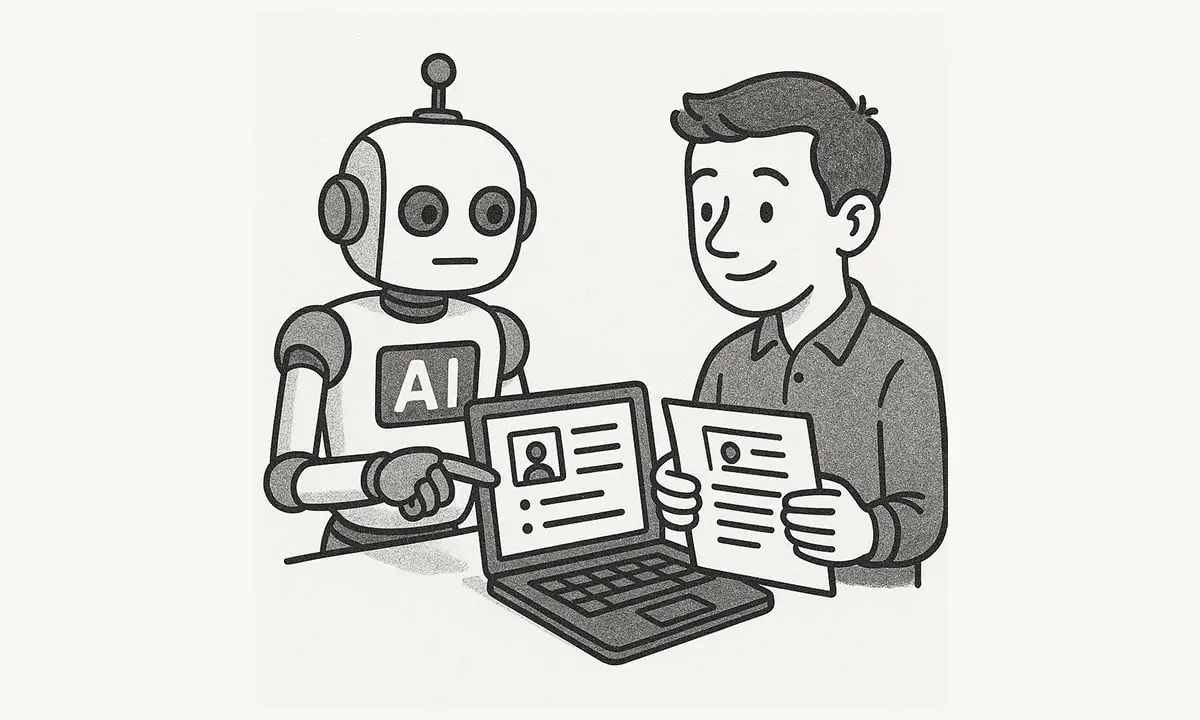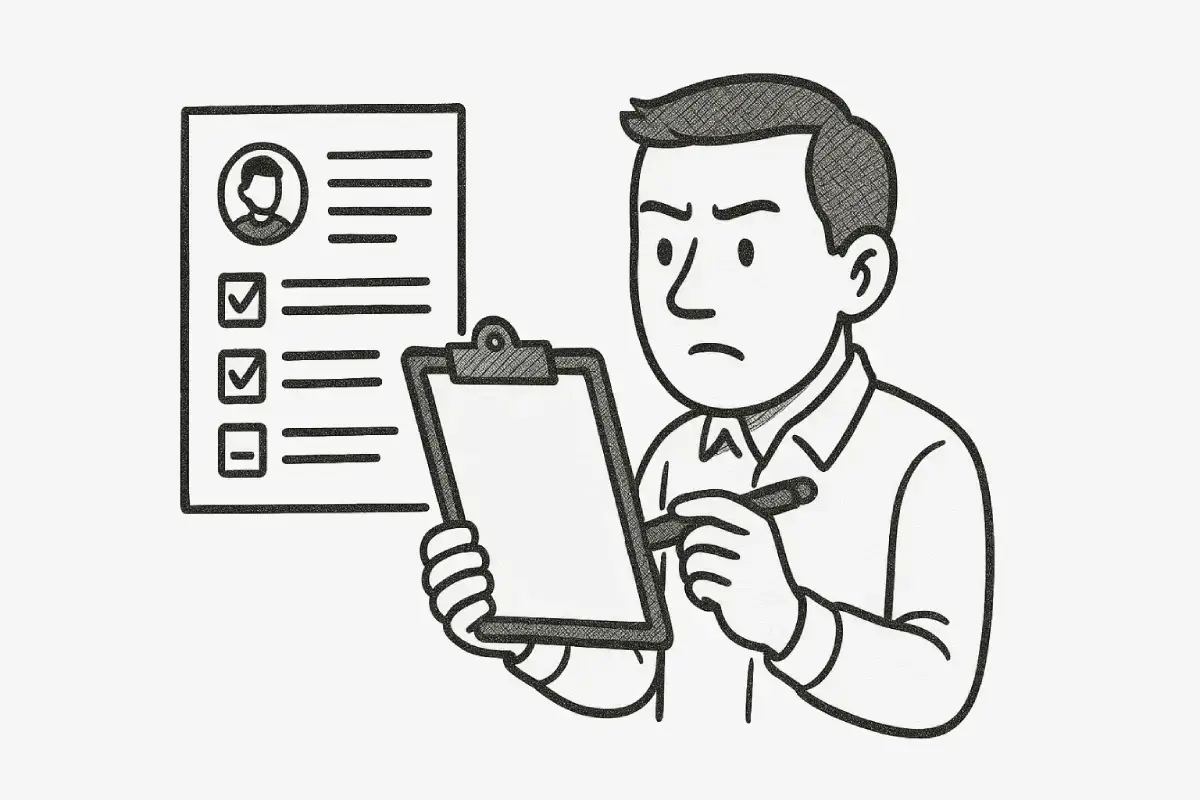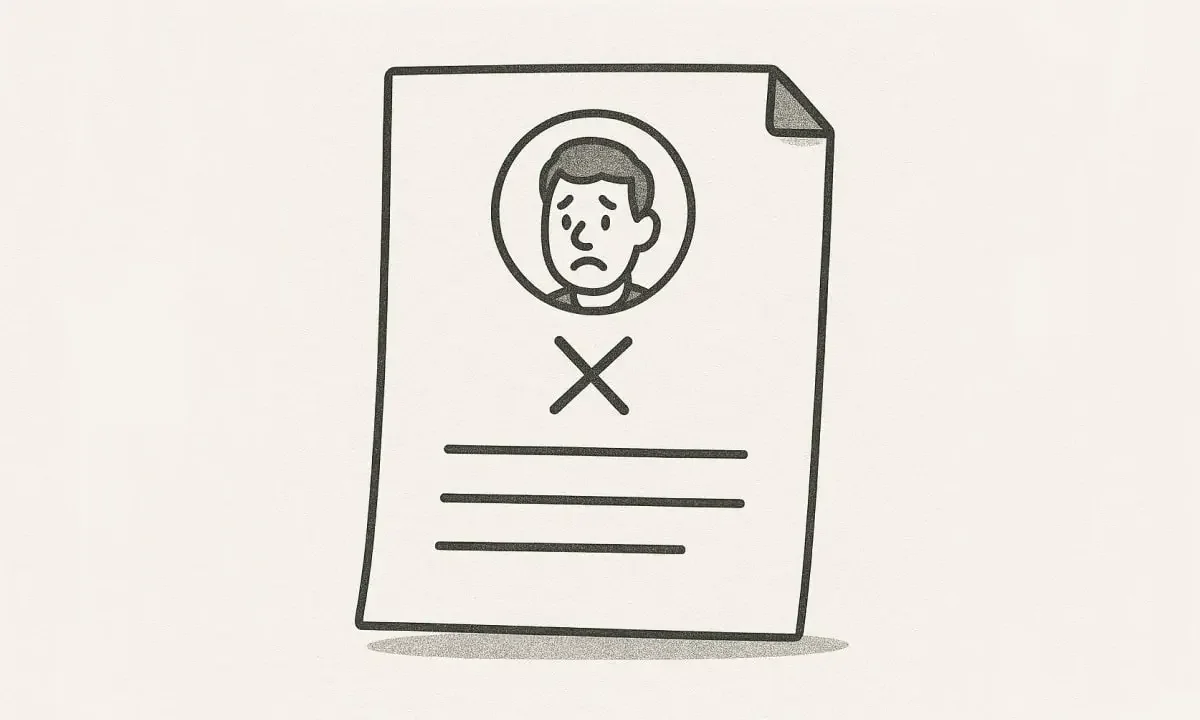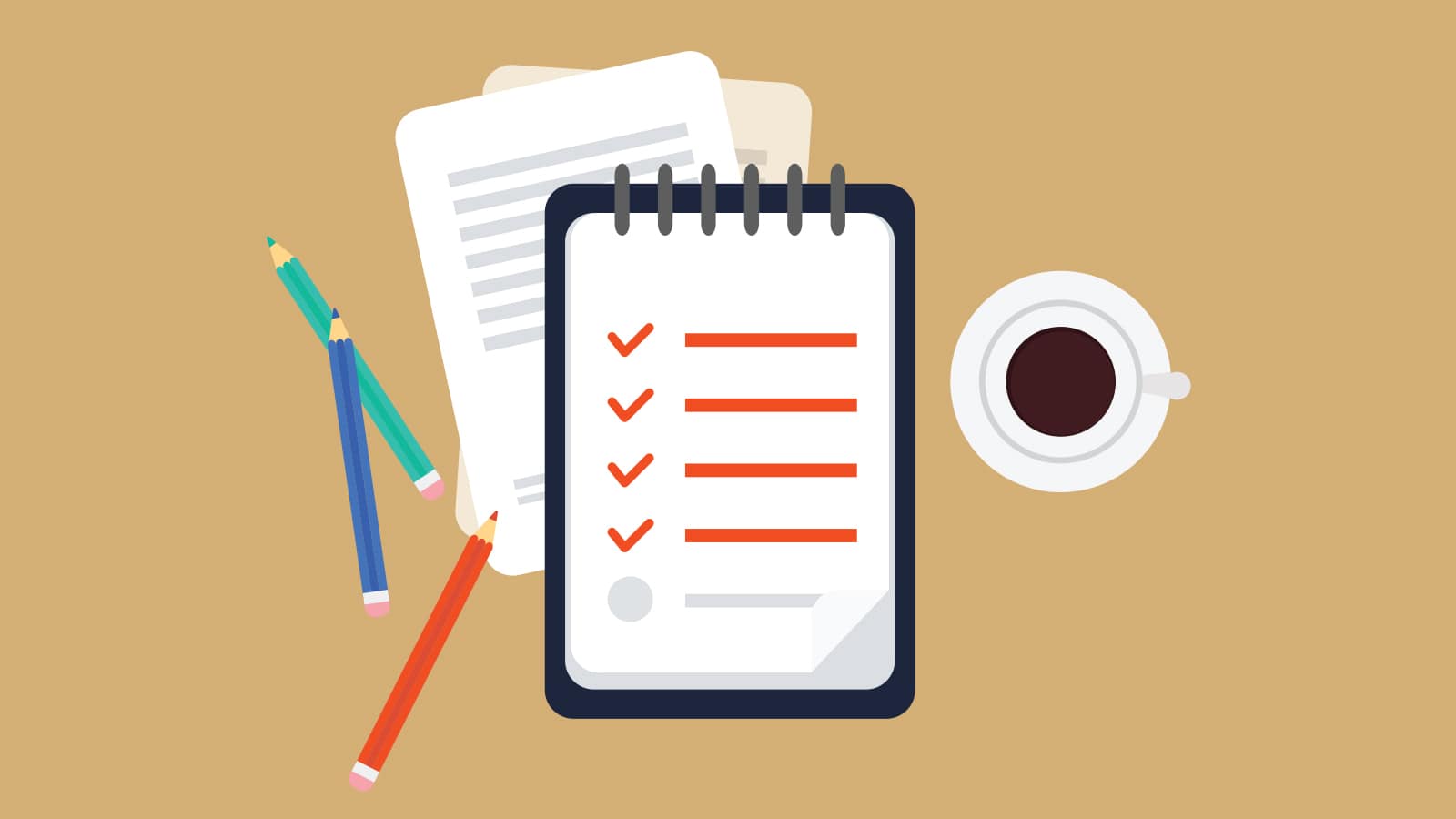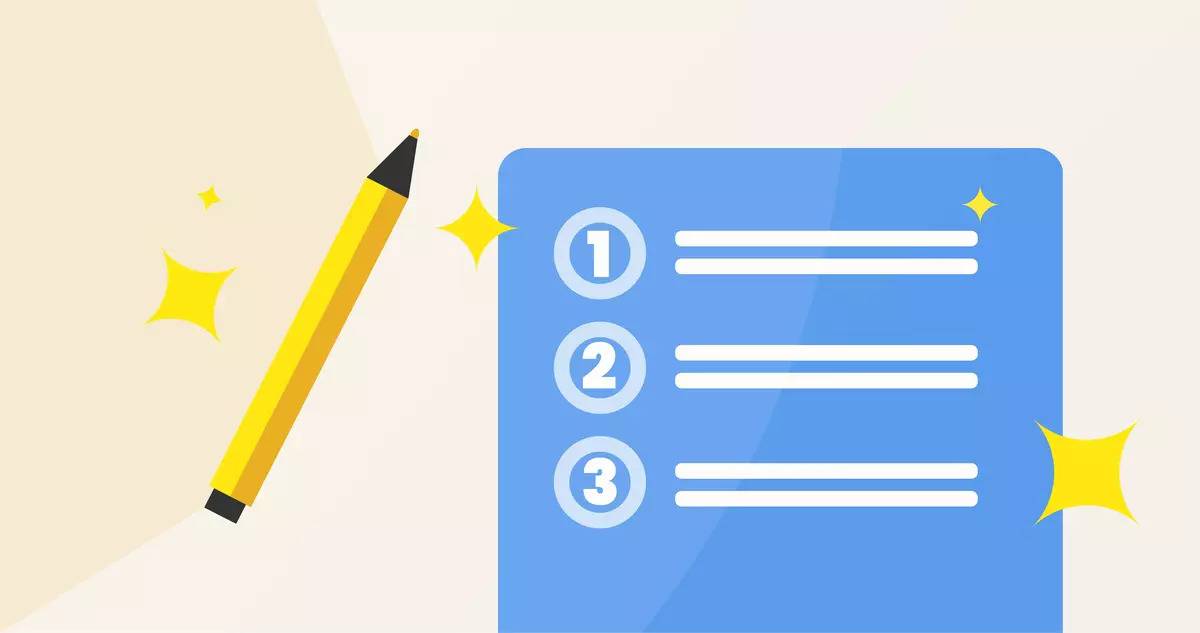You’d sit there, staring at a blinking cursor in a Microsoft Word document, trying to remember what on earth you accomplished in a job you left three years ago. It was an exercise in creative writing and self-Googling, trying to find fancy-sounding synonyms for “managed” or “assisted.” The whole process was a soul-crushing, ego-bruising, caffeine-fueled nightmare. The end result was usually a document that was 50% corporate jargon, 40% outright lies, and 10% typos.
Then, along came ChatGPT, the silver bullet, the magic wand, the answer to all our resume-writing prayers. Right?
Wrong. So, so wrong.
Handing your career over to ChatGPT without a strategy is like giving the keys to a Formula 1 car to a toddler. There’s a ton of power under the hood, but the results are going to be messy, probably disastrous, and you definitely won’t end up where you wanted to go.
The biggest misconception about using AI for your resume is that its job is to write it for you. It’s not. Its job is to be your tireless, lightning-fast, and slightly dim-witted intern. You are still the manager. You are the strategist. You are the editor-in-chief. If you just ask it, “Write me a resume for a marketing manager,” you will get back a beautifully formatted, completely generic, and utterly useless pile of digital fluff that will get your application sent straight to the digital trash can.
Why? Because a winning resume isn’t just a list of things you did. It’s a targeted marketing document designed to do one thing: convince a very busy, very skeptical person that you are the least risky solution to their very expensive problem. To do that, it needs your voice, your context, and your strategic direction.
So, let’s talk about how to properly manage your new AI intern to create a resume that actually opens doors.
The Ground Rules: Managing Your AI Intern
Before you write a single prompt, you need to understand the fundamental nature of your new assistant.
- It is a Confident Liar: ChatGPT will make things up with breathtaking confidence. It will invent metrics, assign you responsibilities you never had, and use terminology that sounds plausible but is complete nonsense in your industry. It doesn’t know it’s lying; it’s just a pattern-matching machine, and sometimes the pattern it matches is fiction. Your number one job is to be the fact-checker.
- It Has No Context: It doesn’t know about that one nightmare project that taught you more than a decade of smooth sailing. It doesn’t know your boss was a micromanager, forcing you to develop incredible diplomacy skills. It doesn’t know the company culture or the industry’s inside jokes. You have to provide all the context.
- It Craves Specificity: Vague inputs lead to vague outputs. The more detailed, specific, and constrained your instructions are, the better the result will be.
Think of it this way: You wouldn’t tell a human intern, “Just, you know, do some marketing.” You’d give them a specific task, examples, a target audience, and a deadline. You must treat the AI with that same level of managerial rigor.
Step 1: The Brain Dump (Feeding the Machine)
The first step is not to ask the AI for anything. It’s to give it everything. You need to create a “master document” of your entire career. This is your raw material. Open a blank document and just start typing. Don’t worry about formatting or grammar. Just dump.
- Copy and paste your entire old resume.
- Copy and paste job descriptions from previous roles.
- List every major project you worked on. What was the goal? What did you do? What was the outcome?
- Think about your “wins.” Did you save money? Save time? Increase revenue? Improve a process? Make a customer happy? Write it down.
- What are you good at? What do people come to you for?
- What software do you know? What languages do you speak?
Get it all out. The more detail, the better. This document is the messy, sprawling source of truth that your AI intern will draw from. It’s the single most important step, and the one most people skip.
Step 2: The Master Prompt (Giving Your Intern Its Mission)
Now, you’re going to craft a “master prompt” that you can use as a starting point for all your requests. This prompt sets the stage and tells the AI what game it’s playing.
Here’s a template:
Prompt: “You are an expert career coach and professional resume writer specializing in the [Your Industry] sector. Your target audience is hiring managers and recruiters at [Type of Company, e.g., ‘fast-growing tech startups,’ ‘Fortune 500 financial firms’]. Your tone should be professional, confident, and results-oriented. You will use the ‘Situation, Action, Result’ framework to create impactful, quantified achievements. You will avoid generic corporate jargon and clichés. I am going to provide you with my career history and a specific job description. Your task will be to help me tailor my resume to that specific role.”
Why it works: You’ve given it a role, an audience, a tone, a methodology (Situation, Action, Result), and a clear objective. You’ve set the guardrails for every interaction that follows.
Step 3: The Keyword Heist (Beating the Robot Overlords)
Before a human ever sees your resume, it has to get past the Applicant Tracking System (ATS). This is a robot that scans your resume for keywords and skills from the job description. It’s a dumb robot. Your job is to feed it exactly what it wants to see.
This is where your AI intern shines.
Copy the entire job description for the role you want. Then use a promt like this:
Prompt: “Using the career history I’ve provided and the job description below act as an ATS analysis tool. Identify the top 10-15 most important keywords, hard skills, and soft skills from this job description. Present them as a list. Then, identify any gaps between my experience and the job requirements.”
The output you get is your roadmap. It’s a checklist of every term you need to strategically weave into your resume. It’s no longer a guessing game. As a bonus, identifying the gaps is crucial. It tells you what you might need to address in your cover letter or what areas to downplay. According to analysis from sources like Jobscan, optimizing for these specific terms is one of the most critical factors in passing the initial ATS screening.
Step 4: Crafting Bullet Points That Don’t Suck
This is the heart of your resume. Most people write passive, boring bullet points like “Responsible for managing the weekly newsletter.” This tells the reader nothing.
Your AI intern can help you transform these into active, quantified achievements.
Prompt: “Take this bullet point from my history: ‘Responsible for managing the weekly newsletter.’ Using the job description keywords we identified, rewrite this to be an impactful achievement. Use the ‘Situation, Action, Result’ framework. Here’s some context: The newsletter went out to 20,000 subscribers. I implemented a new A/B testing strategy for subject lines that increased the open rate from 15% to 25% over six months.”
What you might get back: “Revitalized the weekly company newsletter by implementing an A-B testing strategy, boosting open rates from 15% to 25% across a 20,000-subscriber list in 6 months.”
Boom. That’s a world of difference. Do this for every single bullet point. Give the AI the raw fact and the context, and ask it to polish it into a gem.
Remember, the AI is a tool for refining, not creating. You provide the substance—the “what”—and the AI provides the style—the “how.” It’s a partnership. If you don’t give it the raw numbers and context, it will just make them up.
Step 5: The Final Polish (Your Job, Not the AI’s)
Once you’ve assembled your resume from these AI-polished parts, the most important work begins. You must now put on your editor-in-chief hat.
Read the entire document out loud. Does it sound like you? Or does it sound like a slightly-too-perfect robot? AI often has a certain rhythm, a certain cadence. Your job is to break it.
- Vary sentence length. If the AI gave you three long sentences, rewrite one to be short and punchy.
- Inject your own words. Find a few places to swap out a “perfect” corporate word for something more authentic to you.
- Check for flow and consistency. Make sure the story of your career makes sense.
- Proofread. Then proofread again. And then have a human friend proofread it.
This final human touch is your secret weapon. In a sea of applications, many of which are now being slapped together by AI, a resume that feels authentic and human stands out. Recruiters are getting better at spotting the tells. A recent report from the Society for Human Resource Management (SHRM) highlights how AI is changing the game on both sides, and recruiters are adapting their methods to look for authenticity.
ChatGPT is an incredible tool. It can take 80% of the grunt work out of writing a resume. It can help you brainstorm, organize, and articulate your value in a way you might struggle to do on your own. But that last 20%? That’s the human element. That’s the strategy, the fact-checking, the personality, and the final sign-off.
That part is, and always will be, up to you…
You might also like: Failing My First Remote Job Interview
